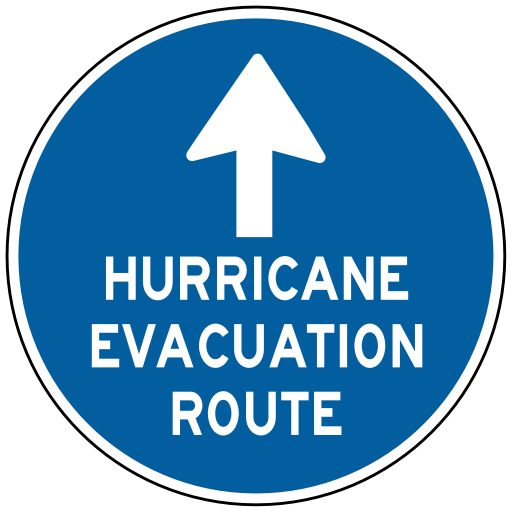 |
Preparation in Advance of Approaching Storm |
 |
 Image credit: weatherunderground.com. |
Hurricane Watch: there is a possibility of a hurricane event within 36-48 hours.
When this potential exists residents should:
- Check often for official updates on the radio, TV, or NOAA Weather Radio.
- Activate family disaster plan.
- Make sure car has a full tank of fuel.
- Check medicine supplies.
- Fully charge cell phones and check flashlight/radio batteries.
- Secure important prescription medicines in waterproof containers.
- Secure lawn furniture and any other loose outdoor items.
- Wedge sliding glass doors to prevent lifting from their tracks.
- Move your boat if time permits.
Hurricane Warning: a hurricane WILL strike in 24-36 hours.
When this potential exists residents should:
- Plan for all outdoor pre-hurricane preparation to be completed prior to the onset of tropical storm force winds (sustained 39 MPH winds).
- Stay tuned to radio, TV and NOAA Weather Radio for official updates.
- Board or shutter windows.
- Board up garage and porch doors.
- Bring in outdoor pets.
- Fill bathtub and other large containers with water to ensure a supply for sanitary purposes.
- Turn off propane tanks and utilities.
- Unplug small appliances.
- Close all interior doors.
Hurricane Warning: sustained winds of at least 74 mph or greater are expected within 12-24 hours or less.
When this potential exists residents should:
- In coastal or riverine areas, move valuables to upper floors of the home.
- Turn the refrigerator thermostat to its coldest setting and keep the door closed.
- Avoid using the phone, except for serious emergencies.
- Turn off and isolate computer equipment.
- Be prepared to seek refuge in a small interior room, closet or hallway on the lowest level of the home.
- Be aware that the calm eye of the hurricane- although conditions will improve, the storm is not over.
Things to Have on Hand in Case of A Hurricane
An action plan and well-stocked disaster preparation kit are both highly recommended in coastal zones where hurricanes can impact. Having the whole family ready can make preparations once warnings have been raised much easier. The following items can be extremely helpful in an emergency situation. It is best to store these items in sturdy, easy-to-carry containers such as backpacks, duffle bags, and/or plastic totes. Please note, if your city or town is in imminent danger of a hurricane, evacuation announcements may have been made, and should be taken seriously.
Disaster Preparation Kit:
- Cash: Banks and ATMs may not be open or available for extended periods after the storm has passed.
- Important documents (or copies of the documents) in a waterproof container, including insurance and medical records, bank account numbers, Social Security card, etc.
- Water: at least one gallon daily per person for 3-7 days.
- Food: at least enough for 3-7, including non-perishable packaged or canned food/juices, foods for infants or the elderly, snack foods, non-electric can opener, vitamins.
- Paper plates/plastic utensils
- First Aid Kit/Medicines/Prescription Drugs (for a downloadable card where you can list all your prescriptions, please see www.rxresponse.org).
- Toiletries/Hygiene items/Moisture wipes
- Battery-operated radio (and NOAA weather radio)
- Tools
- Flashlight/Batteries/Glow sticks
- 10x10 ft tarp
- A roll of duct tape
- Blankets/pillows, etc.
- Clothing, including seasonal/rain gear/sturdy shoes.
- Keys.
- Vehicle with full tank of gas and emergency supplies.
- Special Items for babies and the elderly.
- Toys, books and games.
- Pet care items, including proper identification/immunization records/meds for your pet, ample food and water, a carrier or cage, and a leash and/or muzzle. You may also want to have a pet plan.
For a fun, online, family experience on how to assemble a storm kit, please visit http://www.stormstruck.com.
Additional Resources
|
 |



